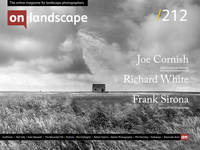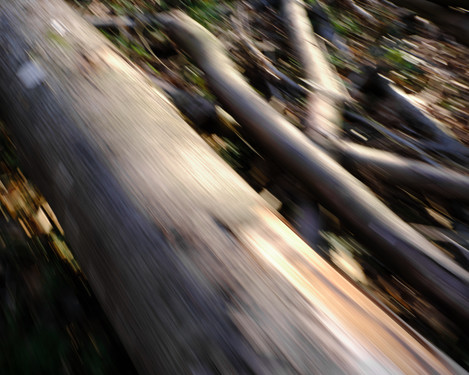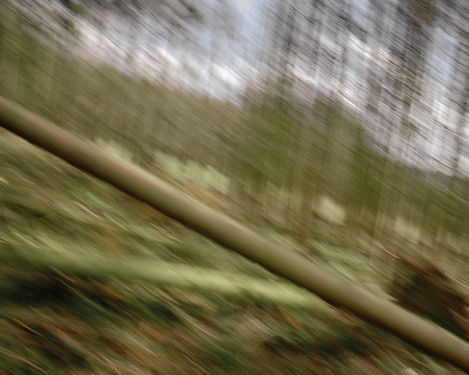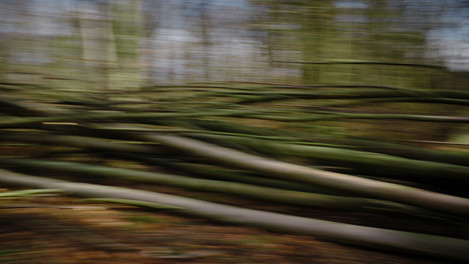Mini project

Alexander Koch
Alex Koch is a 31 year old landscape photographer from Marburg, Germany, with an interest in abstract, experimental and minimalistic compositions. He started digital photography seriously about 8 years ago, but in the course of time he also became interested in working with film and medium format cameras. His work has been published in numerous magazines and in local exhibitions. Besides his love for photography he also works as a doctor in a country doctor's office.
In times of the corona crisis, where there are exit restrictions in many countries and where travel is practically impossible and also highly questionable from an epidemiological point of view, a place becomes more and more attractive for photography; the forest behind your own house!
One always tends to think that the most spectacular pictures have to be taken at the most exotic destinations possible, but where, in the end, you are there only for a short time and have to live with the current conditions.
The advantages of a nearby location are actually obvious. Over the years you have already found an intense relationship with this place, in my case through many walks and mountain bike tours, with or without a camera. You know the light, you know when it falls where and how, and you can wait in peace for perfect conditions and then return to one place or another and take wonderful photographs full of emotion. At least, I have the impression that this kind of work leads me to photographs that satisfy me even after years. That's not to say that it's impossible to get great shots while travelling, but then there's usually a good portion of luck involved.
Currently, at the end of March, it is still allowed to walk alone in the forest, at least in my part of Germany, which is not only healthy for the immune system, but also for the mind. During my walks since the beginning of the year and also, already in spring last year, I wanted to capture the consequences of the winter storms in our forest. Especially this February there were some violent hurricanes, some of which caused heavy destruction. The storms in recent winters have been very intense here. The news warned against going outside, the railway traffic was partly completely stopped, and you had to lash down your flower pots on the terrace.
As it is rather unadvisable to be in the forest during such a hurricane, I didn’t enter it until it was safe again. Unfortunately, it’s rather difficult at first to catch the mood of a storm when it is already over. This frustrated me at first, because a fallen tree was soberingly unexciting on a normal shot.
So, I began to experiment a little. How could it be possible to give the photographs the dynamics that such a storm normally produces? How would it be possible to generate wind and rain on a dry day? It was clear to me that I had to include movement in the recording in some way. Eventually, I started using slower shutter speeds and intentional camera movements. This was something I had tried many times on the beach to blur the straight horizon between the sea and the sky and to smooth the sea, to generate an overall colour mood rather than to focus on a specific subject. This technique is also known to capture very straight trees in a kind of watercolour picture. This time I tried to give the scenery more dynamics and depth.
If the trees don't move themselves, I just moved the camera. By using different shutter speeds, in this case between 1/2s and 1/30s, and different directions of movement, very exciting effects could be achieved.
In mechanics, motion describes a local change in a certain time relative to a reference point. The decisive point here is the word "relative". A movement can be observed when the actual object moves, but it also occurs when the reference point moves. A car may move towards a truck, or the truck may move towards the car, but the result will be very similar, in the end both will collide. It was similar with the images on these days. It would also be conceivable that the trees would move strongly in the wind or fall over, but it's actually only the camera that moves and thereby achieves the effect. Of course, the trained viewer can quickly recognise this, but the basic mood that is transported is again closer to the actual events.
What I found particularly exciting was that - contrary to the usual work with tripod and live view - you cannot foresee how the finished picture will actually look. This reminded me a bit of working with film, even if the feedback still comes much earlier. I almost fell into a childish play with different movements, and lost myself deeper and deeper in the woodland, away from official paths. It is these moments that make up the photography in my eyes. When you forget everything around you, concentrate fully on your work, suddenly it doesn't matter anymore which camera you have with you, hours seem like minutes and at the end you arrive back home satisfied and balanced almost like after a meditation session.
When I now look at the pictures on the monitor at home, I have the impression that they are not only a figure of the stormy situation in the woodland, but also symbolic of the current global situation. Not only is the forest in motion, but the whole world is changing at a rapid pace. I can recognise fear and also a certain uncertainty in the photographs. It's almost as though the ground is being pulled out from under your feet. It's like when you stagger and have to catch yourself again.
But, despite all the destruction I could see, there were already signs of reconstruction. Small green buds are sprouting around fallen trees and it is clear that new beauties will be created here. The forest is a living organism. A storm can uproot individual trees or devastate entire strips of woodland, but life will return here, perhaps even take advantage of the destruction, similar to what forests do after major fires on the west coast of the USA. So the hope remains that good things will also emerge from the currently moving times.










